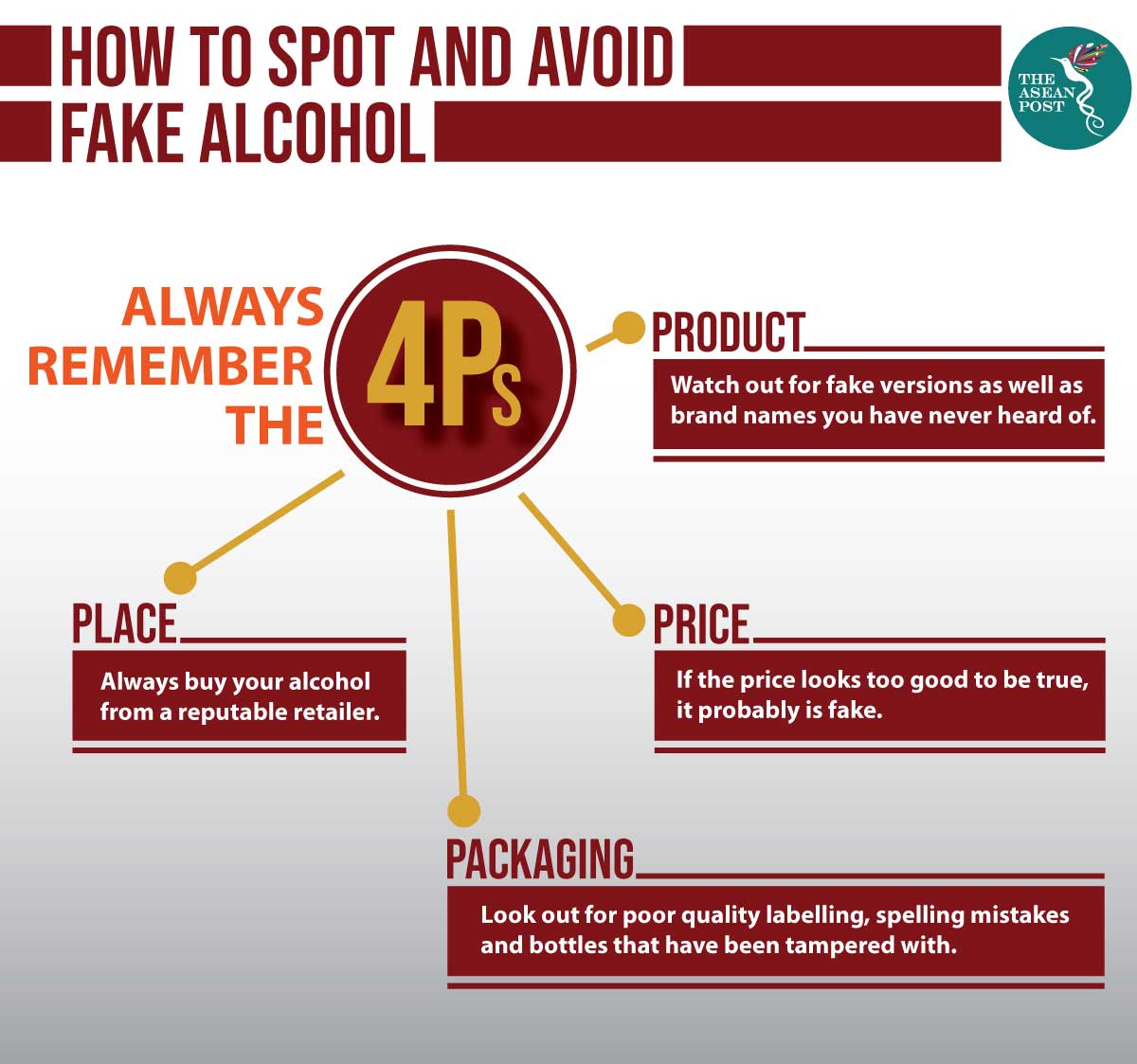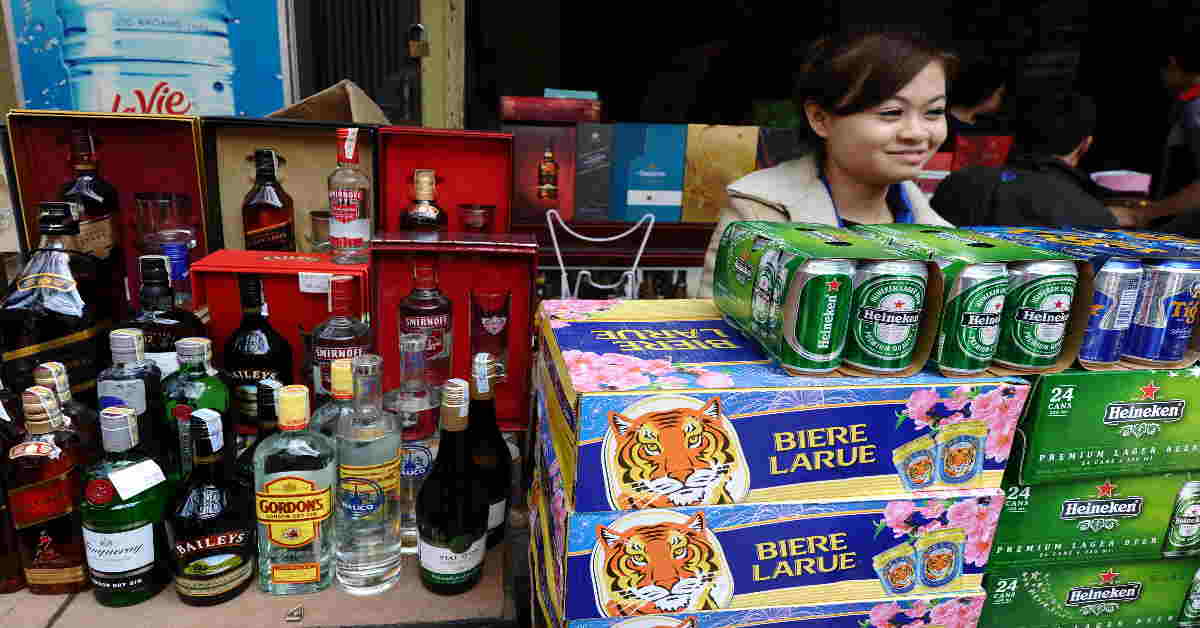Southeast Asia has long battled with the problem of fake alcohol. Over the years, a few Asian countries have made worldwide headlines for the wrong reason – illicit and counterfeit booze. In November 2019, a 63-year-old Malaysian man nicknamed the “King of fake liquor” was arrested in Thailand for producing counterfeit foreign whisky for more than 30 years. In Cambodia in the same month, several thousand bottles of booze, along with counterfeit packaging including labels and boxes were confiscated. According to media reports, Cambodia has earned a reputation for producing fake cigarettes, beer and perfumes. In China – according to Brown-Forman, the company that makes Jack Daniel’s – it is estimated that 30 percent of all alcohol in the country is fake.
Fake or illegally produced alcohol is often made in unlicensed distilleries to be sold. Fake alcohol could even be packaged to look like established, legally produced brands. Some illicit alcohol manufacturers would gather bottles of original brands and fill them with counterfeit alcohol.
It was reported that 15 years ago, beer brands temporarily stopped selling their products in Cambodia because they could not compete with counterfeits as the fake ones were sold at a cheaper price. But other than disrupting businesses, a greater problem lies in the consumption of fake alcohol - it’s oftentimes fatal.
Fake alcohol in Southeast Asia
Properly produced and certified alcoholic beverages are made with ethanol – alcohol that’s safe to drink in moderation. But fake alcoholic drinks are produced using other cheaper forms of alcohol which can have a serious impact on one’s health. The fake ones are typically cheap, illegal and sometimes – homemade. Fake alcohol can contain chemicals used in antifreeze, screen wash and nail polish remover.
In ASEAN countries such as Malaysia, Indonesia and Vietnam, alcoholic beverages are highly taxed making imported liquors expensive. In 2015, Indonesia decided to ban the sale of alcohol at convenience stores and mini-marts, which then created a larger black market for alcohol. According to the Center for Indonesian Policy Studies, “with alcohol being expensive and difficult to obtain, Indonesians drink five times more unrecorded than legally purchased and distributed liquor.”
In Vietnam, some bar owners sell counterfeit alcohol in the guise of original products to make a lot of money. The illegally produced alcohol that is filled in the bottles is likely a mixture of ethanol and methanol, or one of any number of other chemicals. In Malaysia, concerns over the sale of fake alcohol has risen amid a spate of methanol poisoning cases, which claimed 33 lives in September 2018 alone.

Methanol poisoning
In 2018, Indonesia experienced one of the worst cases of methanol poisoning leaving more than 100 people dead and over 160 in hospitals in a span of just one month. The victims were reported to have drunk fake alcohol containing fatal amounts of methanol.
Methanol is a by-product of the fermentation process in making alcohol. It’s meant to burn off naturally when alcohol is distilled, but a mistake made during this process may leave it present in the final product. In order to cut costs and speed up production targets, illegal manufacturers and home breweries sometimes fail to sufficiently heat the alcohol or even forgo the heating process entirely – leaving the poisonous methanol behind.
Methanol is highly dangerous as it is colourless and odourless which makes it difficult for amateurs to distinguish the mixture from an original brew. Even a small amount of methanol can be toxic and symptoms of poisoning do not appear immediately – taking 12 to 24 hours for the effects to show. Methanol poisoning can cause confusion, dizziness, drowsiness, headaches and the inability to coordinate muscle movements. The symptoms are sometimes confused by victims as a hangover. According to the United States (US) Centers for Disease Control (CDC), methanol poisoning can prompt nausea, vomiting and heart or respiratory failure. A CDC report stated that "the by-products of methanol metabolism cause an accumulation of acid in the blood, blindness, and death.”
Between 2008 and 2013, 300 people died from consuming illicit liquor in Indonesia, according to official statistics. And between 2014 and 2018, the figure rose to 500. In Malaysia, from September to October 2018, 45 deaths were recorded from methanol poisoning in fake alcohol – most of the victims were foreign workers involved in hard labour.
Official reports and figures of those who died and suffered from the effects of methanol poisoning in fake alcohol are difficult to obtain as it is sometimes misdiagnosed as something else, such as bleeding in the brain or kidney failure. Misdiagnosis occurs everywhere especially in Muslim-majority countries such as Indonesia and Malaysia. Alcohol is prohibited for Muslims, despite the beverages sold legally in both countries. Victims of methanol poisoning may be too afraid to go to a hospital for treatment out of fear of being judged by the hospital staff and the public in general. The fear of being judged could also be one of the reasons for purchasing illicit alcohol from unlicensed distributors.
Bootleg booze has been a problem for many years in Southeast Asia; taking the lives of locals and tourists alike. Nevertheless, not many understand the implications and dangers of fake alcohol to this day.
Related articles:
